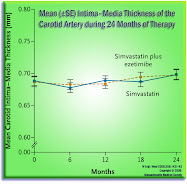 This evening, Pauline W. Chen, M.D, writing for the "Doctor and Patient" column of the The New York Times has a very good piece on the difficulties facing the target market for a particular vaccine -- that market being people over the age of 60. These difficulties have converged to effectively prevent more than 95 percent of all U.S. 60-plus year olds from getting a shingles vaccine -- the vaccine approved in 2006 as Zostavax®, and manufactured by Merck.
This evening, Pauline W. Chen, M.D, writing for the "Doctor and Patient" column of the The New York Times has a very good piece on the difficulties facing the target market for a particular vaccine -- that market being people over the age of 60. These difficulties have converged to effectively prevent more than 95 percent of all U.S. 60-plus year olds from getting a shingles vaccine -- the vaccine approved in 2006 as Zostavax®, and manufactured by Merck.
First, there have been supply issues (as I detailed last summer), due to difficulties in manufacturing such a biologic, at Merck. Next, and partially related to the first issue -- until 30 minutes prior to administration, it must be kept hard-frozen (circa 16º -- thus, there is no easy way to hold mass "point of common access" vaccine campaigns -- at senior centers, for example -- without heavy, high-end refrigeration equipment). In addition, insurers and Medicare require that separate forms be filled out for reimbursement -- and that the patient pay out of pocket for it, before seeking later reimbursement through this arcane form submission process. On top of all that, though -- the killer! -- it cost more than ten times as much as the typical seasonal flu vaccine.
Do go read it all, at The New York Times -- but here is the concluding bit:
. . . .Although only one dose is required, the vaccination costs $160 to $195 per dose, 10 times more than other commonly prescribed adult vaccines; and insurance carriers vary in the amount they will cover. Thus, while the overwhelming majority of doctors in the study did not hesitate to strongly recommend immunizations against influenza and pneumonia, they could not do the same with the shingles vaccine. . . .
With all of these barriers, it comes as no surprise that in the end only 2 percent to 7 percent of patients are immunized against shingles. "There’s just so much that primary care practices must take care of with chronic diseases like obesity and diabetes and heart disease," Dr. Hurley noted. "If a treatment isn’t easy to administer, then sometimes it just falls to the bottom of the list of things for people to do. . . ."
Indeed.

















No comments:
Post a Comment